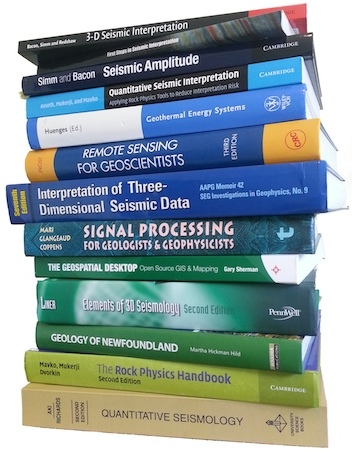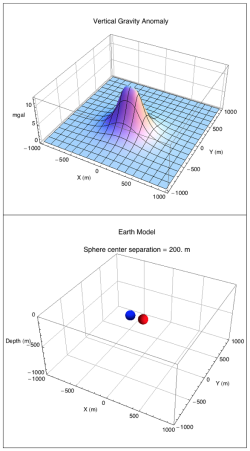Whither technical books?
/ Leafing through our pile of new books on seismic analysis got me thinking about technical books and the future of technical publishing. In particular:
Leafing through our pile of new books on seismic analysis got me thinking about technical books and the future of technical publishing. In particular:
- Why are these books so expensive?
- When will we start to see reproducibility?
- Does all this stuff just belong on the web?
Why so expensive?
Should technical books really cost several times what ordinary books cost? Professors often ask us for discounts for modelr, our $9/mo seismic modeling tool. Students pay 10% of what pros pay in our geocomputing course. Yet academic books cost three times what consumer books cost. I know it's a volume game — but you're not going to sell many books at $100 a go! And unlike consumer books, technical authors usually don't make any money — a star writer may score 6% of net sales... once 500 books have been sold (see Handbook for Academic Authors).
Where's the reproducibility?
 Compared to the amazing level of reproducibility we saw at SciPy — where the code to reproduce virtually every tutorial, talk, and poster was downloadable — books are still rather black box. For example, the figures are often drafted, not generated. A notable (but incomplete) exception is Chris Liner's fantastic (but ridiculously expensive) volume, Elements of 3D Seismology, in which most of the figures seem to have been generated by Mathematica. The crucial final step is to share the code that generated them, and he's exploring this in recent blog posts (e.g. right).
Compared to the amazing level of reproducibility we saw at SciPy — where the code to reproduce virtually every tutorial, talk, and poster was downloadable — books are still rather black box. For example, the figures are often drafted, not generated. A notable (but incomplete) exception is Chris Liner's fantastic (but ridiculously expensive) volume, Elements of 3D Seismology, in which most of the figures seem to have been generated by Mathematica. The crucial final step is to share the code that generated them, and he's exploring this in recent blog posts (e.g. right).
I can think of three examples of more reproducible geophysics in print:
- Gary Mavko has shared a lot of MATLAB code associated with Quantitative Seismic Interpretation and The Rock Physics Handbook. The code to reproduce the figures is not provided, and MATLAB is not really open, but it's a start.
- William Ashcroft's excellent book, A Petroleum Geologist's Guide to Seismic Reflection contains (proprietary, Windows only) code on a CD, so you could in theory make some of the figures yourself. But it wouldn't be easy.
- The series of tutorials I'm coordinating for The Leading Edge has, so far, includes all code to reproduce figures, exclusively written in open languages and using open or synthetic data. Kudos to SEG!
Will the web win?
None of this comes close to Sergey Fomel's brand of fully reproducible geophysics. He is a true pioneer in this space, up there with Jon Claerbout. (You should definitely read his blog!). One thing he's been experimenting with is 'live' reproducible documents in the cloud. If we don't see an easy way to publish live, interactive notebooks in the cloud this year, we'll see them next year for sure.
So imagine being able to read a technical document, a textbook say, with all the usual features you get online — links, hover-over, clickable images, etc. But then add the ability to not only see the code that produced each figure, but to edit and re-run that code. Or add slider widgets for parameters — "What happens to the gather if if I change Poisson's ratio?" Now, since you're on the web, you can share your modification with your colleagues, or the world.
Now that's a book I'd be glad to pay double for.
Some questions for you
We'd love to know what you think of technical books. Leave a comment below, or get in touch.
- Do you purchase technical books regularly? What prompts you to buy a book?
- What book keeps getting pulled off your shelf, and which ones collect dust?
- What's missing from the current offerings? Workflows, regional studies, atlases,...?
- Would you rather just consume everything online? Do you care about reproducibility?
400 posts
The last post was our 400th on this blog. At an average of 500 words, that's about 200,000 words since we started at the end of 2010. Enough for a decent-sized novel, but slightly less likely to win a Pulitzer. In that time, according to Google, almost exactly 100,000 individuals have stopped by agilegeoscience.com — most of them lots of times — thank you readers for keeping us going! The most popular posts: Shale vs tight, Rock physics cheatsheet, and Well tie workflow. We hope you enjoy reading at least half as much as we enjoy writing.








 Except where noted, this content is licensed
Except where noted, this content is licensed